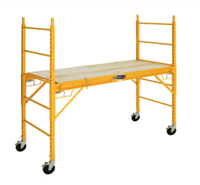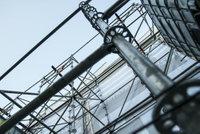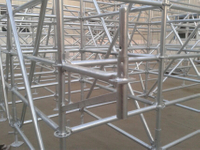Content Menu
● What Is a Cuplock Scaffolding System?
● Advantages of Using Cuplock Scaffolding Systems
>> 1. Time and Cost Efficiency
>> 2. High Structural Stability
>> 3. Versatility in Applications
>> 4. Enhanced Safety
>> 5. Durability and Low Maintenance
>> 6. Flexibility in Design
● Applications of Cuplock Scaffolding
>> Construction Industry
>> Maintenance Projects
>> Event Staging
● Comparison with Traditional Scaffolding Systems
● Case Studies: Successful Use of Cuplock Scaffolding
>> Case Study 1: High-Rise Building Construction
>> Case Study 2: Bridge Repair
● Market Trends and Future Developments
● Best Practices for Cuplock Scaffolding Assembly
>> 1. Pre-Assembly Checks
>> 2. Proper Erection Techniques
>> 3. Regular Inspections
● Conclusion
● FAQ
>> 1. What makes cuplock scaffolding safer than traditional systems?
>> 2. How long does cuplock scaffolding last?
>> 3. Can cuplock scaffolding be used for curved structures?
>> 4. What is the typical load capacity of cuplock scaffolding?
>> 5. How does cuplock scaffolding reduce costs?
● Citations:
Cuplock scaffolding systems have revolutionized the construction industry by providing a versatile, efficient, and cost-effective solution for temporary platforms and structural support. This modular scaffolding system is widely recognized for its unique locking mechanism, durability, and adaptability to various construction needs. In this article, we will explore the advantages of using a cuplock scaffolding system in detail, supported by examples, images, and videos.
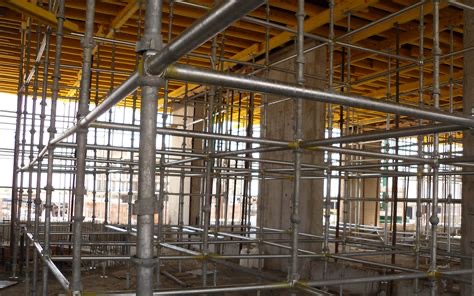
What Is a Cuplock Scaffolding System?
Cuplock scaffolding is a modular system designed for quick assembly and disassembly. It uses vertical and horizontal components connected via metal cups at node points, ensuring stability and ease of use. Developed in the 1970s by SGB (Scaffolding Great Britain), cuplock scaffolding has become one of the most popular systems worldwide due to its reliability and versatility.
Key Features:
- Node Locking Mechanism: Securely connects vertical and horizontal components without loose bolts or wedges.
- Material Durability: Made from high-grade steel with finishes like hot-dip galvanization for corrosion resistance.
- Modular Design: Allows for easy adjustments to fit complex architectural shapes.
Advantages of Using Cuplock Scaffolding Systems
1. Time and Cost Efficiency
Cuplock scaffolding systems are designed for rapid assembly, reducing labor costs significantly. The node locking mechanism allows workers to connect multiple components quickly without requiring additional tools like bolts or clamps.
Benefits:
- Faster Setup: 2–3 times quicker than traditional scaffolding systems.
- Reduced Labor Intensity: Workers only need a small hammer to assemble the system.
- Cost Savings: Fewer loose components mean lower replacement costs over time.
2. High Structural Stability
The cuplock system transmits forces axially through its vertical standards, ensuring excellent stability even under heavy loads. This makes it ideal for shoring applications and supporting concrete slabs during construction.
Features:
- Self-Locking Design: Prevents accidental disconnections during use.
- Load-Bearing Capacity: Suitable for heavy-duty applications like formwork support.
- Resistance to Movement: Forged top cups withstand hammer impacts without loosening.
3. Versatility in Applications
Cuplock scaffolding can adapt to various construction scenarios, including:
- Single-row or double-row scaffolds
- Cantilever structures
- Material lifting platforms
- Staircase towers
- Mobile scaffolds
Its modular design allows for customization based on project requirements, such as load capacity, height adjustments, and curved configurations.
4. Enhanced Safety
Safety is a critical factor in construction projects, and cuplock scaffolding systems excel in this area. The continuous work platforms eliminate obstructions like diagonal bracing, making navigation safer for workers.
Safety Features:
- Secure Node Points: Reduce the risk of component failure during use.
- Optional Add-ons: Ladder safety gates and staircases enhance worker protection.
- Compliance with Standards: Meets EN12810 and OSHA safety regulations.
5. Durability and Low Maintenance
Cuplock scaffolding components are made from high-quality steel with finishes like hot-dip galvanization or powder coating, ensuring long-term durability.
Benefits:
- Corrosion Resistance: Hot-dip galvanization protects against rust for over 10 years.
- Minimal Maintenance: General rust does not affect assembly or disassembly operations.
- Lightweight Design: Easier transportation and handling compared to traditional scaffolds.
6. Flexibility in Design
The cuplock system's adaptability allows it to form complex shapes that traditional scaffolds cannot achieve. For example:
- Cantilever arms enable overhanging structures.
- Birdcages provide internal access platforms.
- Stair towers offer safe vertical movement across levels.
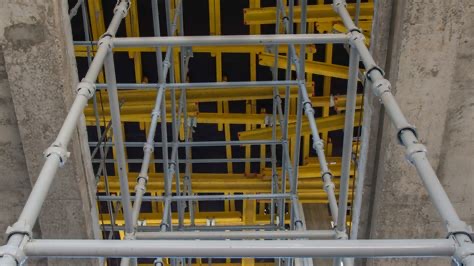
Applications of Cuplock Scaffolding
Cuplock scaffolding is widely used across various industries due to its versatility:
Construction Industry
Used for facade work, slab casting, formwork support, and shoring applications.
Maintenance Projects
Ideal for repairing bridges, tunnels, and industrial facilities.
Event Staging
Provides temporary platforms for concerts, exhibitions, and other events.
Comparison with Traditional Scaffolding Systems
| Feature | Cuplock Scaffolding | Traditional Scaffolding |
| Assembly Time | 2–3 times faster | Time-consuming |
| Safety | Continuous platforms | Obstructions like bracing |
| Durability | Hot-dip galvanized steel | Prone to rust |
| Versatility | Modular design | Limited adaptability |
| Maintenance | Minimal | Frequent bolt replacements |
Case Studies: Successful Use of Cuplock Scaffolding
Case Study 1: High-Rise Building Construction
In a recent high-rise construction project, cuplock scaffolding was chosen for its ability to support heavy loads and provide continuous work platforms. The project involved multiple levels of scaffolding, which were efficiently assembled and disassembled using the cuplock system. This resulted in significant time savings and improved worker safety.
Case Study 2: Bridge Repair
Cuplock scaffolding was used in a major bridge repair project due to its adaptability to complex shapes and ability to withstand harsh environmental conditions. The modular design allowed for easy adjustments to fit the bridge's curved sections, ensuring safe access for maintenance workers.
Market Trends and Future Developments
The cuplock scaffolding market is evolving with advancements in technology and changing regulatory requirements. Trends include:
1. Increased Use of Sustainable Materials: Suppliers are focusing on eco-friendly materials to reduce environmental impact.
2. Integration of Digital Technologies: Some suppliers are adopting digital tools for inventory management and customer service.
3. Enhanced Safety Features: New designs and materials are being developed to improve safety standards.
Best Practices for Cuplock Scaffolding Assembly
1. Pre-Assembly Checks
Ensure all components are in good condition before assembly. Check for any damage or corrosion that could compromise safety.
2. Proper Erection Techniques
Use a spirit level to ensure the base plates are level and plumb. Securely lock all connections using the cuplock mechanism.
3. Regular Inspections
Conduct regular inspections to identify any potential issues early. This includes checking for loose connections or signs of wear.
Conclusion
The cuplock scaffolding system offers unparalleled advantages in terms of efficiency, safety, durability, and versatility. Its modular design makes it suitable for a wide range of applications while reducing labor intensity and overall costs. By choosing cuplock scaffolding over traditional systems, construction companies can significantly improve productivity while ensuring worker safety.
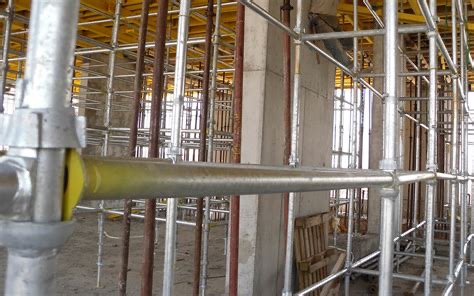
FAQ
1. What makes cuplock scaffolding safer than traditional systems?
Cuplock scaffolding eliminates diagonal bracing obstructions found in traditional systems, creating continuous work platforms that are safer to navigate. Additionally, its self-locking node points reduce the risk of accidental disconnections during use.
2. How long does cuplock scaffolding last?
With proper maintenance and finishes like hot-dip galvanization, cuplock scaffolding can last over 10 years without significant wear or corrosion.
3. Can cuplock scaffolding be used for curved structures?
Yes! Cuplock scaffolding's modular design allows it to adapt to curved configurations by adjusting bracket spacing and component angles.
4. What is the typical load capacity of cuplock scaffolding?
Cuplock systems are designed to handle heavy loads suitable for shoring applications and formwork support. Load capacities vary based on component specifications but generally exceed those of traditional scaffolds.
5. How does cuplock scaffolding reduce costs?
Cuplock systems save costs through faster assembly times (reducing labor expenses), fewer loose components (lower replacement costs), and durable materials (longer lifespan).
Citations:
[1] https://www.adtoscaffold.com/new/advantages_of_cuplock_scaffolding.html
[2] https://www.internationalscaffolding.com/projects/what-is-a-cuplock-scaffolding-system/
[3] https://www.linkedin.com/pulse/cuplock-system-decking-infill-advantages-origin-abhishek-mishra
[4] https://www.wm-scaffold.com/cup-lock-scaffold.html
[5] https://constrofacilitator.com/the-versatility-of-cuplock-scaffolding-systems-in-modern-construction/
[6] https://www.sparsteel.com/blog/cuplock-scaffolding-types-uses-and-benefits/
[7] https://www.linkedin.com/pulse/cuplock-system-scaffolding-versatile-quality-assured-scaffold-mishra
[8] https://assets.website-files.com/66f42abc97ec5a674ec026bc/66fa2698689716374a110aee_36019422232.pdf













